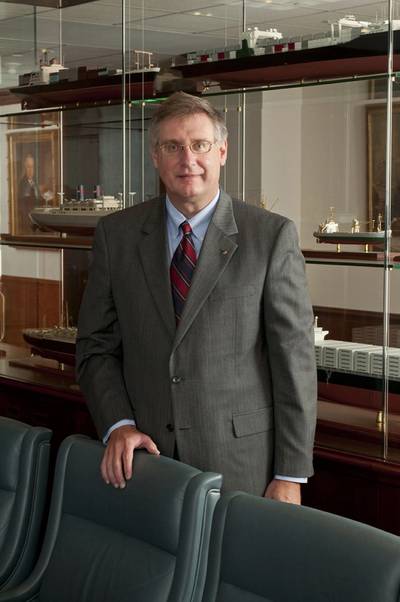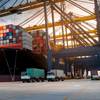153rd meeting of the classification society highlights class-centric strategy and vision for the future of class
ABS held its Annual Meeting on April 26, 2016 in New York, where Chairman, President & CEO Christopher J. Wiernicki reported that “2015 was a year of moving forward in strong and sustainable ways with a relentless focus on our class-centric strategy.”
In 2015, the ABS-classed fleet surpassed 230 million gross tons (mgt), a nearly five percent growth from the previous year. The largest areas of expansion for the class society came from the tanker, gas carrier, containership, bulk carrier, offshore support vessel and offshore production unit sectors. In total, more than 841 new assets entered the ABS-classed fleet, bringing its total to 12,614 assets.
The ABS orderbook saw even more appreciable growth in 2015, with a 15 percent year-on-year increase to 57.2 mgt of vessels set to be classed by ABS. The Class society also saw its second straight year of net positive class transfers.
“We had a solid performance in 2015, earning the top position in global orderbook share based on gross tonnage and confirming our strong relationships with owners and shipyards around the world,” Wiernicki said. “Our continued growth shows that ABS is well-positioned for today and we are equally ready for tomorrow.”
During the meeting Wiernicki highlighted a number of key projects where ABS is involved, such as the world’s first CNG Carrier and the world’s largest and most advanced wind farm installation and offshore construction vessels. ABS also granted approval in principle (AIP) to a drillship designed for high pressure/high temperature operations in ultra deepwater, and harsh conditions and provided approval for many new concepts such as a dual fuel bulk carrier design, LNG containment systems and an offshore LNG receiving, storage, regasification and bunkering terminal.
According to Wiernicki, “Dedication to providing great classification services, demonstrating industry-recognized technology leadership and being our clients’ trusted advisor in every environment are what fundamentally define the success of ABS.”
Looking to the future, Wiernicki also provided an overview of ABS’ Technology program that is developing advanced technologies and practices to support the future of classification. In 2015, ABS participated in 43 joint development and industry research projects and 37 academic research partnerships as part of more than 150 technology projects. ABS published 64 new or updated Rules, Guides, Guidance Notes and Advisories.
Speaking to the industry Members present, Wiernicki stated, “We are committed to understanding the industry’s views of real-world challenges you face today and tomorrow. It is imperative that we understand your needs and help you anticipate future opportunities. This partnership and role as your trusted advisor will continue to drive our technology investments in the future.”
In the area of Port State Control, ABS reported continued success with the organization continuing to rate amongst the top tier of classification societies in the three major regimes.
The ABS Annual Meeting is held each April in New York City, where the classification society was founded in 1862. During the event, ABS leadership briefs its Members on the organization’s performance and solicits feedback to align future activity to the needs of the marine and offshore industries.















